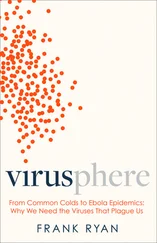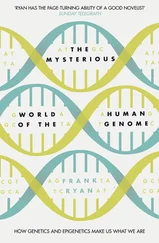Over the years that followed, a dazzling variety of symbioses has been discovered in every ecological niche in nature, being particularly abundant in the flora and fauna of the oceans, including the very corals that manufacture the reefs, and the rainforests, with their fabulous diversity of life forms. It was assumed from the very beginning that such symbiotic relationships would have evolutionary implications for the participating partners, and in 1910 the term “symbiogenesis” was coined by the Russian biologist, Constantin Merezhkowskii, to define symbiosis acting as an evolutionary force. 8
Today we recognise that symbiogenesis operates at several different levels. Most people are familiar with the cleaner station symbioses, where fierce predators, such as sharks and groupers, will patiently queue up at key sites on the ocean bottom and allow their skins, and even the interior of their mouths, to be cleaned of parasites and debris by smaller fish and shrimps. For obvious reasons this is known as a behavioural symbiosis. Metabolic symbioses involve the sharing of useful chemical products between the symbionts, as seen, for example, in the plant-fungal associations, or in the giant tube-worms, which inhabit the deep sea fissures, under the oceans. Here, along the volcanic summits, where tectonic plates are forming, the mouthless worms depend for their nutrition on symbiotic bacteria within their living tissues, and the bacteria, in turn, get their energy from the hydrogen sulphide that bubbles out of the “black smokers”. Many symbioses involve both behavioural and metabolic exchanges, for example the wide variety of pollination partnerships involving plants and insects, or hummingbirds, where the plant supplies the insects or birds with nectar, while the mobile partner carries pollen to other sedentary plants.
Symbiosis also works at a third, more powerful, level, where it is known as genetic symbiosis. This book started with a delightful enigma – the virally enabled transfer of genes necessary for photosynthesis across two kingdoms of life, as seen in the emerald-green sea slug, Elysia chlorotica . It would be surprising if biologists had not considered viruses as potential symbionts throughout the century or more that symbiology had grown and developed as a discipline. But readers will discover few references to viruses in Sapp’s book. In the decade after the Second World War, an American geneticist, Edgar Altenberg, had proposed a symbiotic “viroid” theory, based on the prevailing notions of the similarities of viruses to invisible “naked genes”, or plasmagenes, hidden in living cells. He conceived that viroids might have played a part in cellular evolution, and that cancer-causing viruses might arise de novo in every affected patient from viroids that had previously existed in the affected individual. Altenberg had conceived some startlingly original, even prophetic, insights – but he had been mistaken about the basic nature of viruses. Viruses are not naked genes. And his “viroid” concept was never embraced by the world of biology.
Ever the iconoclast, in the 1960s Rene Dubos also tried to persuade his virological colleagues to put aside their blinkered vision of viruses as nothing more than genetic parasites to consider that, in certain ecological conditions, they might sometimes enhance the host’s ability to survive. But back in the ’60s even the prescient Dubos had lacked the molecular technology necessary to prove his ideas to the world of science and so, once again, his colleagues had not been persuaded. From a wider reading of virological papers, I came across the occasional use of the term “symbiosis” in relation to viruses, sometimes with respect to the behaviour of whole viruses, whether infectious or incorporated into host genomes, and sometimes in relation to isolated genetic sequences derived from viruses. But none of the papers developed the term symbiosis in a way that would be accepted by the discipline of symbiology, which demanded a definition involving the interaction of living organisms, or life forms. The use of the term in relation to genetic sequences was clearly erroneous. And before we could even begin to make progress, from a definitional and developmental perspective, it would be essential to look very hard at the application of “organism” or “life form” to viruses.
Having taken Lederberg’s advice, I took pains over the years that followed to acquaint myself with how symbiosis was defined as a biological interaction, and in particular to how it worked as an evolutionary force. I read, and was enlightened by, the series of books and scientific papers of Lynn Margulis, distinguished Professor at Amherst, Massachusetts, who had played a central role in pioneering our understanding of symbiosis. I amassed a small library of other books, and papers, by symbiological colleagues throughout the century or so of the discipline’s history. I came to realise that many symbiologists misunderstood the essential nature of viruses, and this had given rise to erroneous assumptions, which in turn had delayed appreciation of their potential symbiotic role within the discipline. I thought I could see a way of accommodating the “organismal” or “life form” requirement. Even the most ardent of sceptics saw viruses as “coming alive” during their interaction with their hosts, and nobody denied that viruses were subject to the proven mechanics of Darwinian evolution. All biologists had to accept was that viruses should be defined in relation to their life cycles in their normal living ecology, and that such a definition allowed us to treat them as organisms or life forms from the evolutionary perspective – that small and seemingly reasonable step took me further towards a working definition that might be acceptable to both virology and symbiology. Through such research, and through a growing series of interviews with leading scientists within the two disciplines, I was in a stronger position to extrapolate a proven conceptual framework of symbiogenesis to viruses, and in particular to the potential contribution of viruses to symbiogenesis at genetic level. Meanwhile, it occurred to me that it might be useful to look at symbiosis from a Darwinian perspective.
Where Darwinian theory proposes an essentially linear pattern of evolution, with new species arising through branching divergence from ancestral stock, symbiosis involves a reticulate pattern of evolution through the partnership of different life forms, from species to whole kingdoms. On the face of it this would appear to suggest that symbiogenesis and Modern Darwinism have little in common. But this is not the case. In spite of the clear and important differences between the evolutionary mechanics that underlie the two evolutionary paradigms, symbiosis does not contradict evolutionary theory and it does not contradict Darwin’s concept of natural selection in particular. The crucial question we need to ask ourselves is not whether natural selection applies to the evolution of symbiotic relationships but rather how exactly it operates in circumstances where different life forms interact at a biologically meaningful level.
To put it bluntly – is there something different about the way in which natural selection works in symbiogenesis as opposed to mutation-plus-selection? Let us examine two familiar examples of symbiotic partnerships, and see if we can determine the answer.
Hummingbirds are native to the warmer parts of the Americas, where more than three hundred species depend on the nectar of flowers for their daily sustenance. The birds’ wings have been highly adapted by natural selection to allow them to hover, with pinpoint accuracy, over the flower, and their beaks have also become exceptionally long and shaped to fit the flower head, while their elongated tongues reach down into the well of nectar at the very bottom of the flower. Meanwhile, the flower has also been adapted to fit the bill of the hummingbird. One of the most striking examples of these birds is the violet sabrewing, which has a curved bill that fits the floral tube of its partner, the columnia flower, as accurately as a scimitar fits its streamlined scabbard. The precise match of bill and flower is important, since it deepens and strengthens the partnership, making it more likely that only the sabrewing will feed from the columnia, while the columnia’s stamens are positioned to dab pollen on exactly the right point of the bird’s forehead, so that it fertilises the next flower it visits. From this mutualistic symbiosis it is clear that selection is operating to a significant degree at the level of the partnership, stabilising and making permanent the living interaction.
Читать дальше












